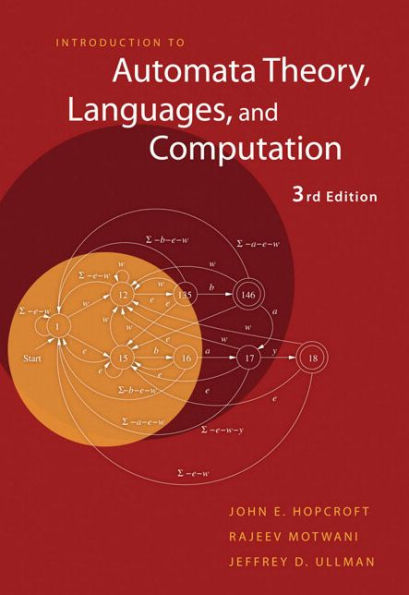Table of Contents
Table of Contents
Chapter 1 - Automata: The Methods and the Madness
1.1 Why Study Automata Theory
1.2 Introduction to Formal Proof
1.3 Additional Forms of Proof
1.4 Inductive Proofs
1.5 The Central Concepts of Automata Theory
1.6 Summary of Chapter 1
1.7 Gradiance Problems for Chapter 1
1.8 References for Chapter 1
Chapter 2 - Finite Automata
2.1 An Informal Picture of Finite Automata
2.2 Deterministic Finite Automata
2.3 Nondeterministic Finite Automata
2.4 An Application_ Text Search
2.5 Finite Automata With EpsilonTransitions
2.6 Summary of Chapter 2
2.7 Gradiance Problems for Chapter 2
2.8 References for Chapter 2
Chapter 3 - Regular Expressions and Languages
3.1 Regular Expressions
3.2 Finite Automata and Regular Expressions
3.3 Applications of Regular Expressions
3.4 Algebraic Laws for Regular Expressions
3.5 Summary of Chapter 3
3.6 Gradiance Problems for Chapter 3
3.7 References for Chapter 3
Chapter 4 - Properties of Regular Languages
4.1 Proving Languages Not to Be Regular
4.2 Closure Properties of Regular Languages
4.3 Decision Properties of Regular Languages
4.4 Equivalence and Minimization of Automata
4.5 Summary of Chapter 4
4.6 Gradiance Problems for Chapter 4
4.7 References for Chapter 4
Chapter 5 — Context-Free Grammars and Languages
5.1 Context-Free Grammars
5.2 Parse Trees
5.3 Applications of Context-Free Grammars
5.4 Ambiguity in Grammars and Languages
5.5 Summary of Chapter 5
5.6 Gradiance Problems for Chapter 5
5.7 References for Chapter 5
Chapter 6 - Pushdown Automata
6.1 Definition of the Pushdown Automaton
6.2 The Languages of a PDA
6.3 Equivalence ofPDA’s and CFG’s
6.4 Deterministic Pushdown Automata
6.5 Summary of Chapter 6
6.6 Gradiance Problems for Chapter 6
6.7 References for Chapter 6
Chapter 7 - Properties of Context-Free Languages
7.1 Normal Forms for Context-Free Grammars
7.2 The Pumping Lemma for Context-Free Languages
7.3 Closure Properties of Context-Free Languages
7.4 Decision Properties of CFL’s
7.5 Summary of Chapter 7
7.6 Gradiance Problems for Chapter 7
7.7 References for Chapter 7
Chapter 8 - Introduction to Turing Machines
8.1 Problems That Computers Cannot Solve
8.2 The Turing Machine
8.3 Programming Techniques for Turing Machines
8.4 Extensions to the Basic Turing Machine
8.5 Restricted Turing Machines
8.6 Turing Machines and Computers
8.7 Summary of Chapter 8
8.8 Gradiance Problems for Chapter 8
8.9 References for Chapter 8
Chapter 9 - Undecidability
9.1 A Language That Is Not Recursively Enumerable
9.2 An Undecidable Problem That Is RE
9.3 Undecidable Problems About Turing Machines
9.4 Post’s Correspondence Problem
9.5 Other Undecidable Problems
9.6 Summary of Chapter 9
9.7 Gradiance Problems for Chapter 9
9.8 References for Chapter 9
Chapter 10 - Intractable Problems
10.1 The Classes P and NP
10.2 An NP-Complete Problem
10.3 A Restricted Satisfiability Problem
10.4 Additional NP-Complete Problems
10.5 Summary of Chapter 10
10.6 Gradiance Problems for Chapter 10
10.7 References for Chapter 10
Chapter 11 - Additional Classes of Problems
11.1 Complements of Languages in NP
11.2 Problems Solvable in Polynomial Space
11.3 A Problem That Is Complete for PS
11.4 Language Classes Based on Randomization
11.5 The Complexity of Primality Testing
11.6 Summary of Chapter 11
11.7 Gradiance Problems for Chapter 11
11.8 References for Chapter 11
Index




